9 Táncsics Street in Buda Castle is an inspiring place for both visitors and archaeologists. It is easy for a slice of Hungarian history to emerge from below the surface where ever we dig. This was also the case with the house known as the former József Barracks (or Táncsics Prison).
Recently, archaeologists from Várkapitányság made fantastic discoveries inside the former barracks building as they searched for the future location of an access lift for disabled visitors to the building awaiting renovation.
During the exploratory research, the walls and stairs of a medieval building that once stood here were found in surprisingly good condition in an unexpected place, under the floor of a room used as a bathroom when the building was owned by the US.
Few know, but the building complex became the property of the United States of America in 1948 – as post-war reparation, until 2014, when the property became the property of the Hungarian state again thanks to an agreement between the Hungarian and US governments.
No one knew until now that the remains under the floor were in such good condition, as they have been preserved since the reconstruction of the Joseph Barracks between 1810 and 1823 – notes Dóra Hegyi, the archaeologist of the Castle Captain, who presented the results of the excavation to PestBuda on site.
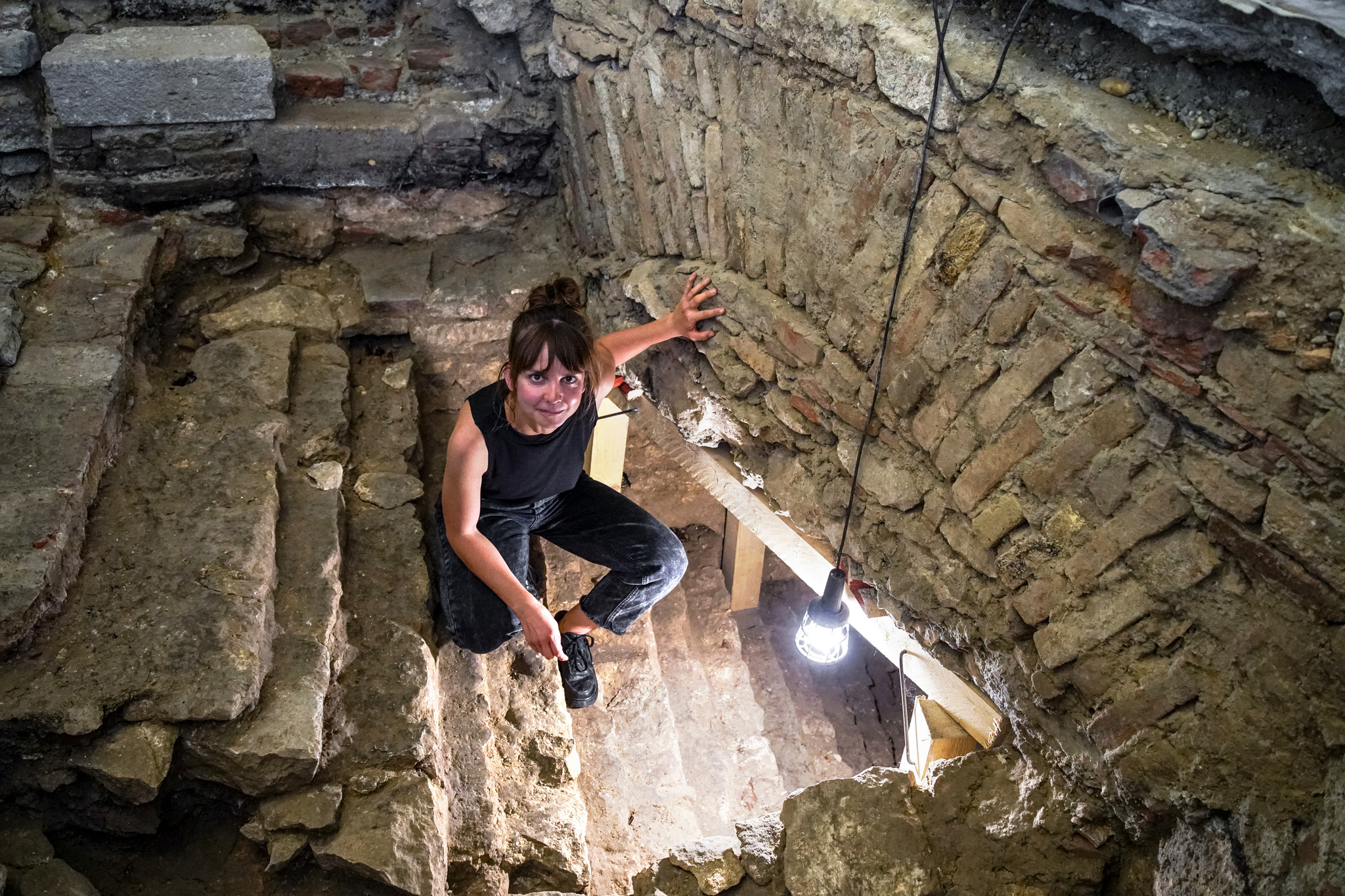
Archaeologist Dóra Hegyi shows the newly unearthed medieval stairs (Photo: Balázs Both/pestbuda.hu)
The oldest parts of the ruins from several eras are of medieval origin: a staircase and a part of the walls that are still used today preserve traces of the period before the Ottoman conquest. However, in the typical way of the Buda Castle, the layers of history are not necessarily located above and below one another, but next to each other: some of the walls of the medieval house now excavated were rebuilt during the Ottoman occupation, the room was vaulted and new walls were erected.
After the Ottoman era, during the reconstructions of the late 17th, early 18th centuries, the lower level of the former house were filled and its facade demolished, raising the floor level of the building constructed in its place.
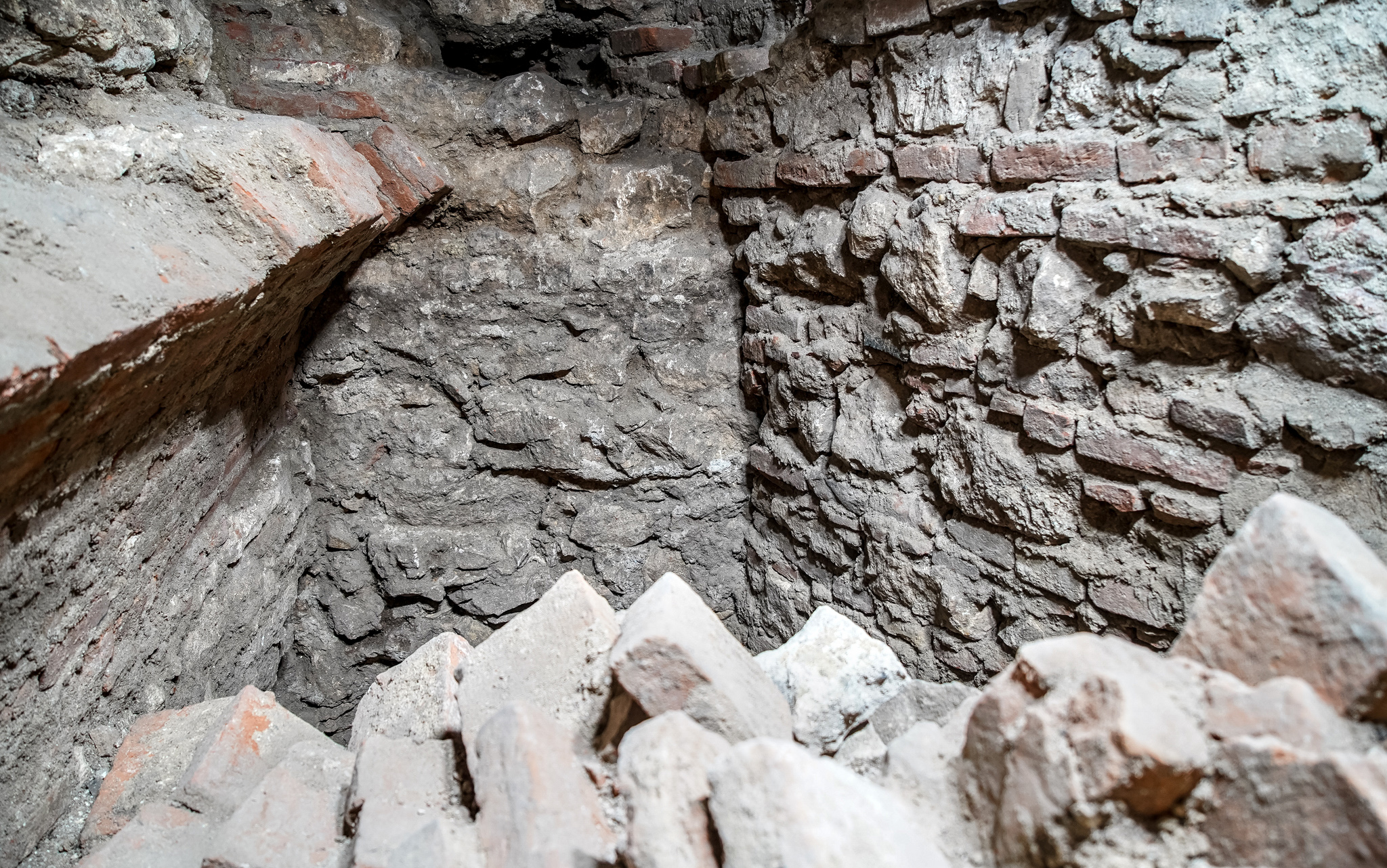
Opposite the sidewall of the medieval building, on the left the remaining part of the vault built during the Ottoman occupation, and on the right the walls of the 19th-century barracks. Below, the bricks of the destroyed Ottoman-era vault rest, under which most of the finds were hidden (Photo: Balázs Both/pestbuda.hu)
What was debris at the time was a real treasure trove for today's archaeologists: the vast majority of the finds were found in this area, Dóra Hegyi revealed. Among them were countless coins, such as a 16th-century Salzburg phenning, a silver denarius of King Ferdinand II of Hungary and a Turkish akçe. Many jewels were also found, such as a beautiful cloak pin decorated with red stones, a crafted medallion attached to a silver chain, and a ring that could even be a modern piece.
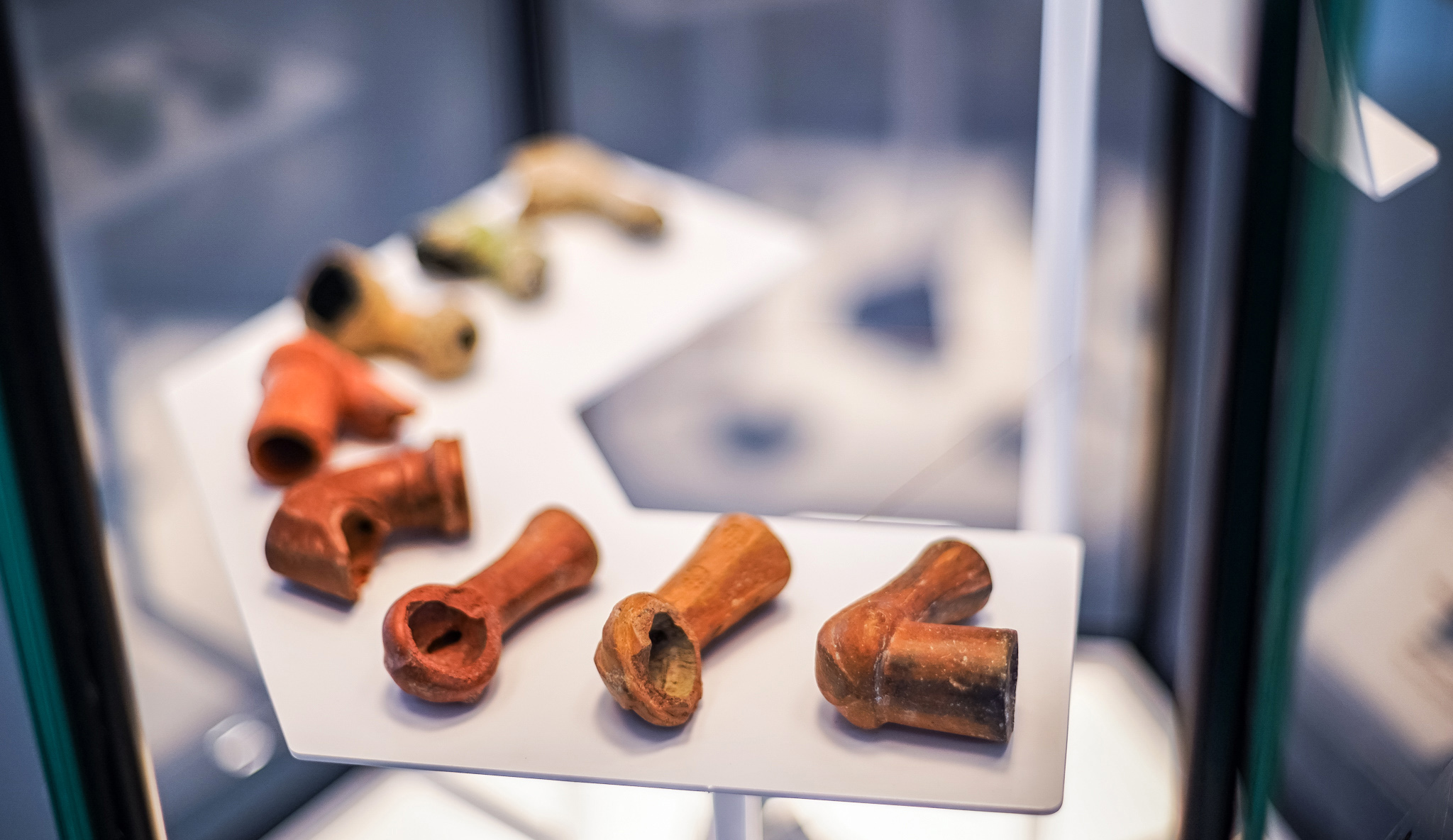
Clay pipes found at the 2018 excavations of the Erdélyi Bastion. These can be seen at the interactive exhibition (Photo: Balázs Both/pestbuda.hu)
In addition to several cannon and musket bullets, objects of everyday life were also unearthed: a piece of a candlestick and various clay pipes. However, one of the most interesting finds was the lead cap of a medicine bottle, which, according to its inscription, comes from a pharmacy in Venice. It almost definitely contained theriaca, a cureall of the era, applied to countless ailments. Opium and other herbs were among its ingredients.
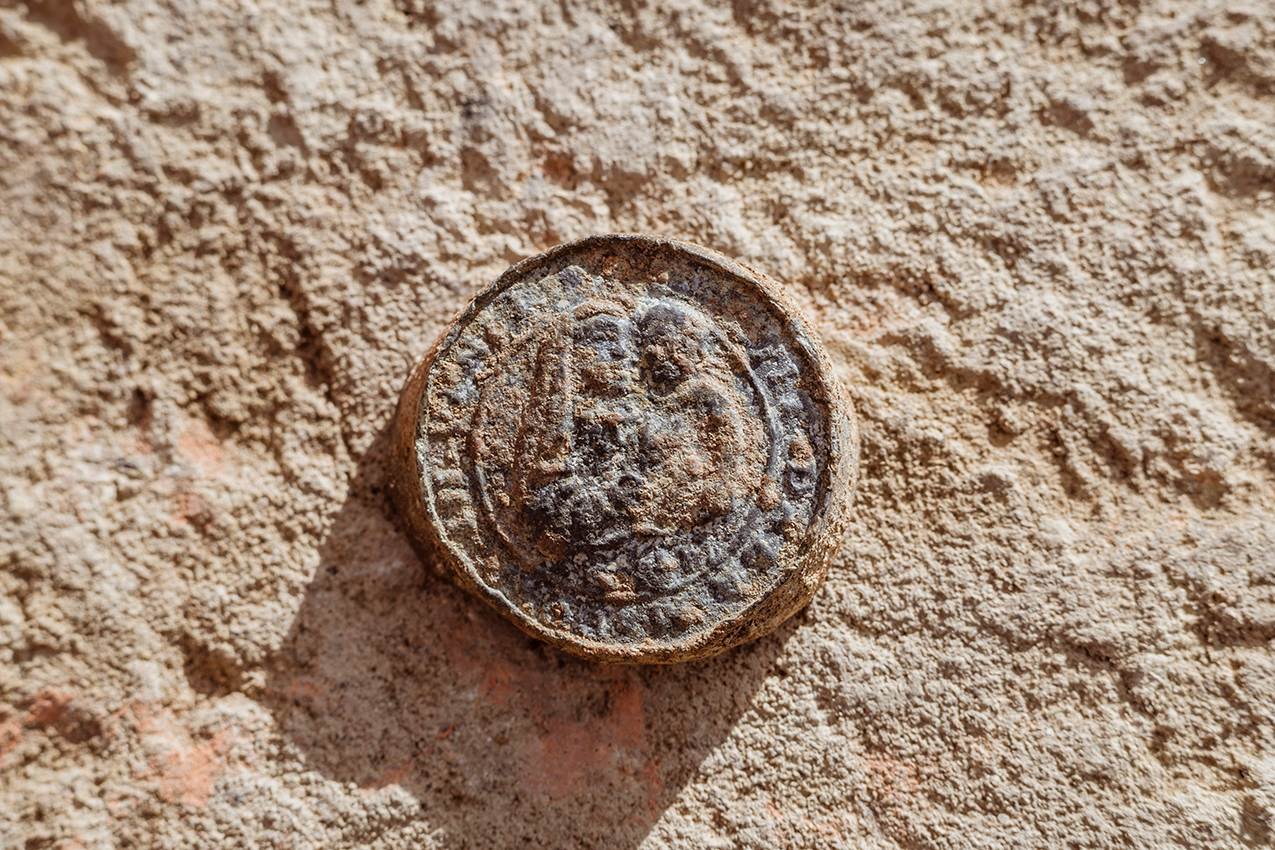
One of the most special finds is the top of a medicine bottle from Venice: it certainly contained theriaca, an opium-infused cureall (Photo: Karolina Kárász/Várkapitányság)
The floor of the 18th-century house (built after filling the lower level of the previous building) tells of another tragic event, a big fire: it was found completely black and charred, said the archaeologist. It is possible that this also contributed to the fact that later, at the beginning of the 19th century, the building of the József Barracks, which still stands today, was built here, and the walls of the former house, which extend to the limestone cliff, were also used for its foundation.
François Langer's 1749 map shows the small building marked with a red arrow, the foundations of which were found (Photo: Várkapitányság)
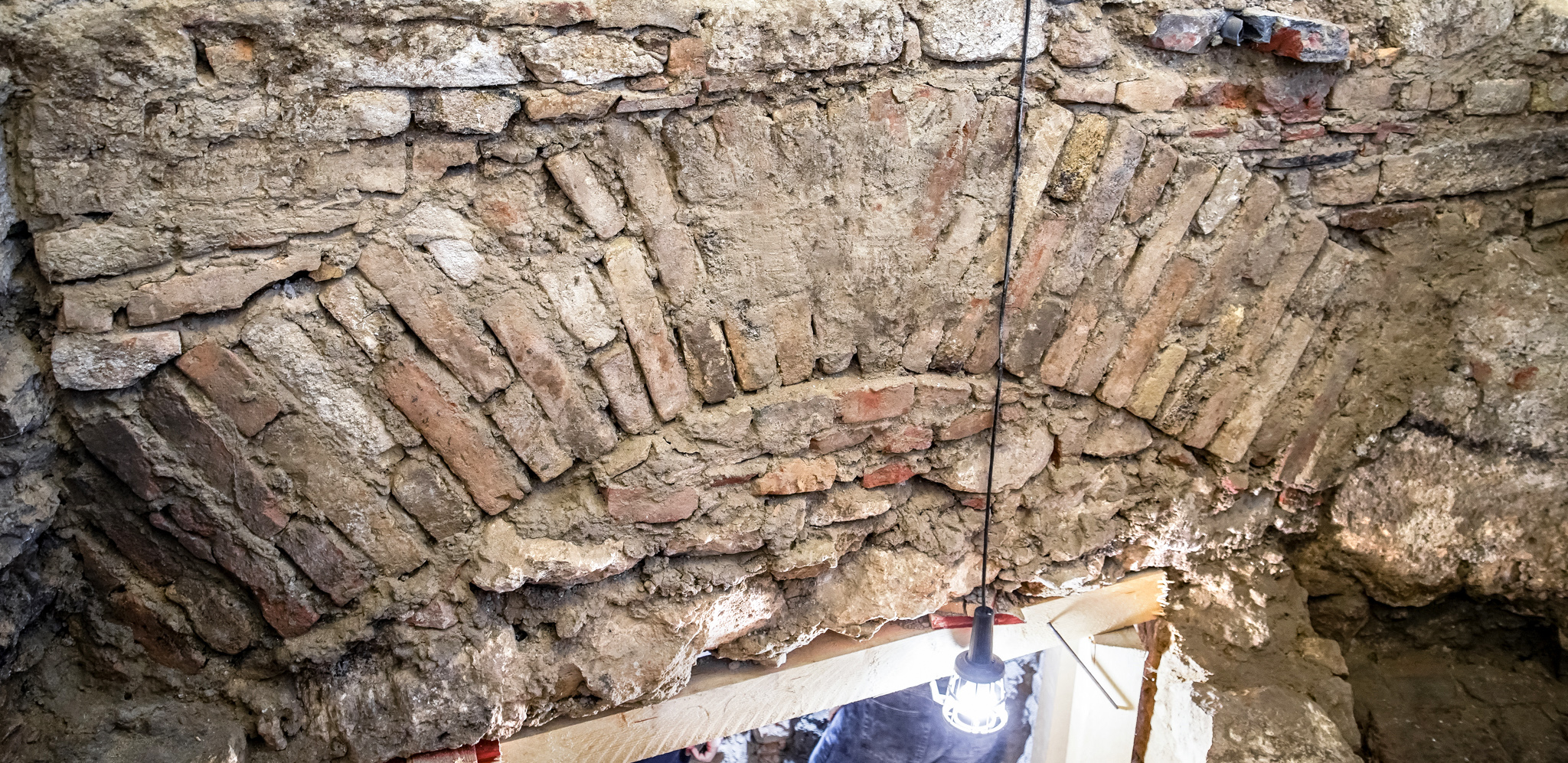
The foundations of the Joseph Barracks were not left to chance: where the ground was judged to be unsafe, load-bearing arches were built. The barracks still rests on these (Photo: Balázs Both/pestbuda.hu)
The reconstructions did not end after the second world, as the Americans demolished the original brick floor in several places and laid reinforced concrete beams under the new walls. Nevertheless, deeper layers remained undisturbed.
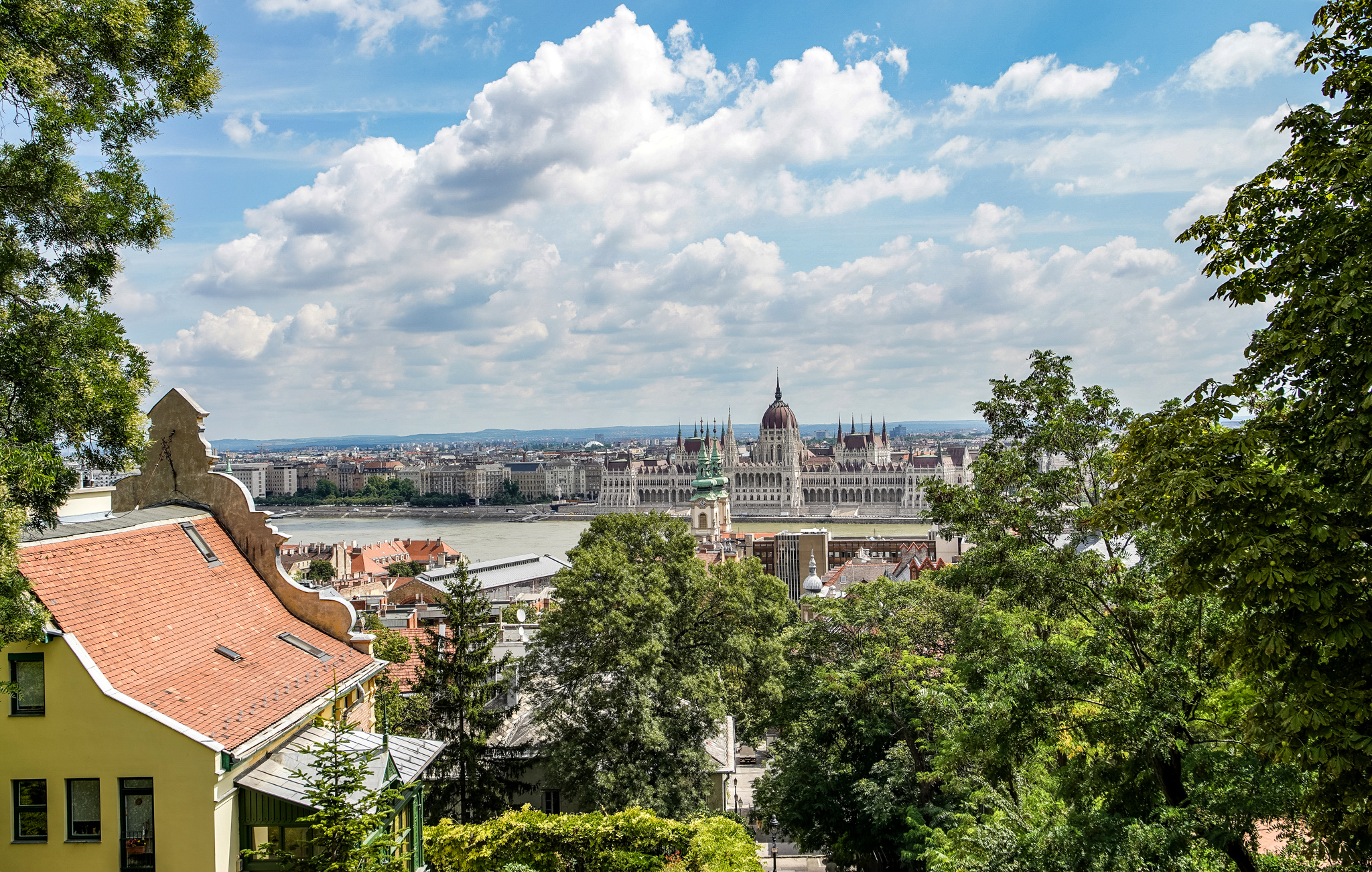
Between 1948 and 2014, only the Americans could enjoy the unparalleled panorama of the barracks' garden, but today anyone who visits T9 can do so (Photo: Balázs Both/pestbuda.hu)
Since the building was returned to the Hungarian state in 2014, it has been possible to rediscover the long-closed area: the remains of the Erdélyi bastion and the old castle walls, built among the first fortifications in the 1530s by order of King János Szapolyai. These can now be visited as part of a spectacular exhibition, where visitors can learn, among others, where the gold treasure hidden in the bastion wall was found, how a pedestrian gate with its own drawbridge worked and how the water of a spring that surfaced below the gunpowder storage hall was used.
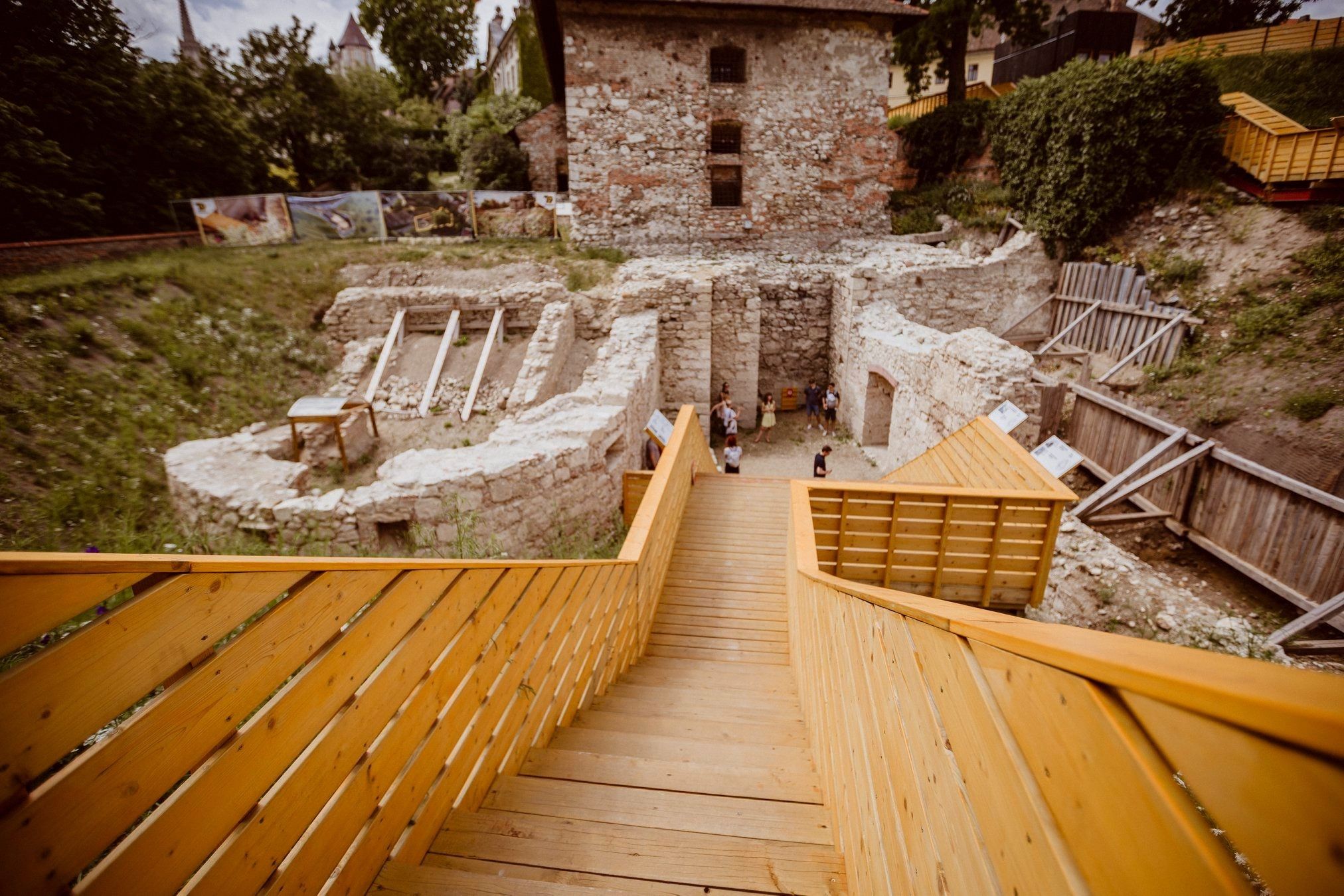
Opposite the Lőportár ('gunpowder storage') building, which houses the interactive exhibition, in the foreground, the remains of the Erdélyi bastion excavated in 2018 at the open-air archaeological exhibition (Photo: Kárász Karolina / Várkapitányság)
The huge plot of the barracks, formerly home to American vegetable gardens, was recently planted with colourful plants. The interactive exhibition, housed in the former Gunpower storehouse of the 1720s, is free until 15 August.
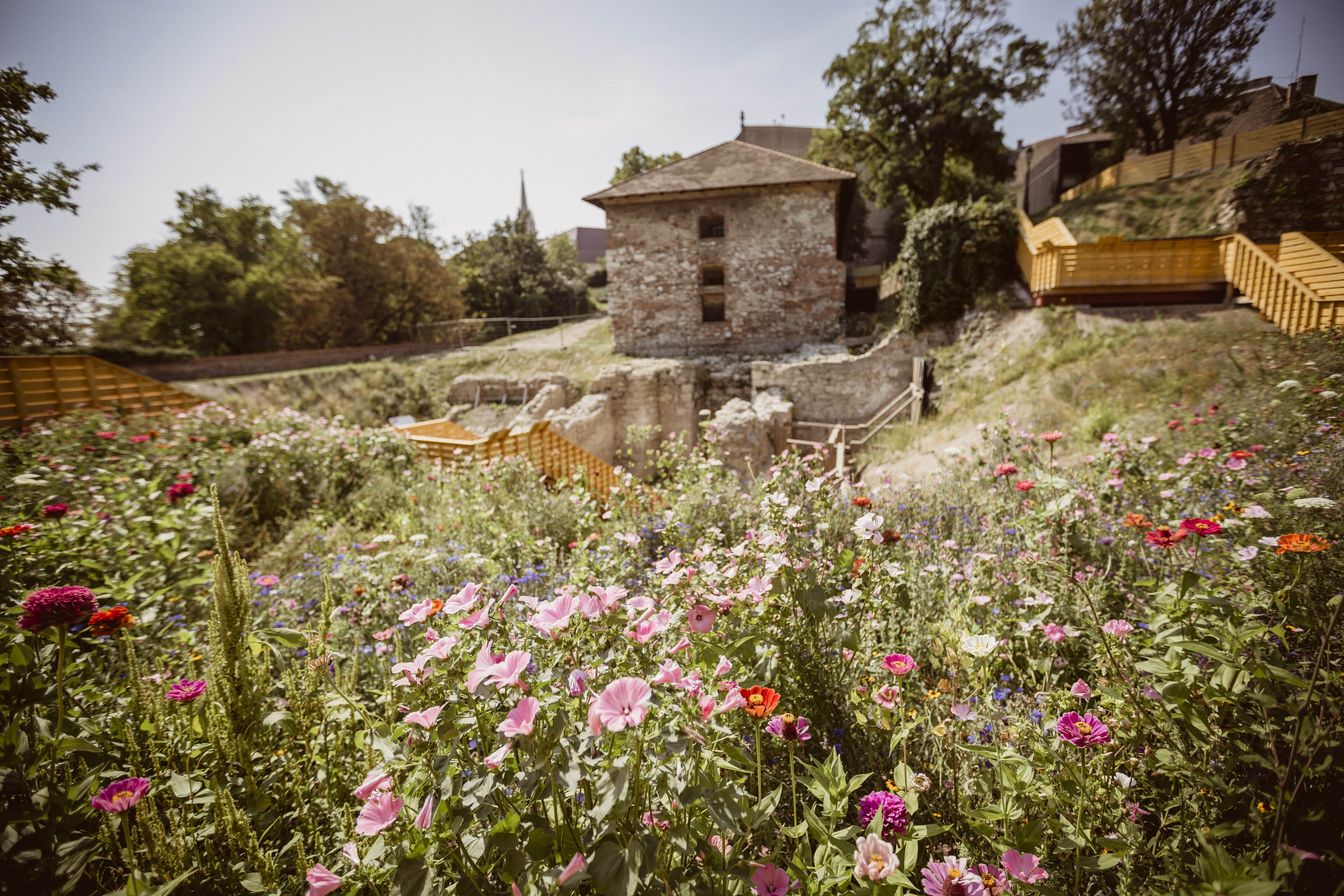
Dozens of colourful flowers decorate the site of the archaeological exhibition (Photo: Karolina Kárász / Várkapitányság)
Next to the southern wall of the Gunpowder Storehouse, there are also two large fig trees with a unique history. The fig bushes growing from the base of the building are not planted specimens. A 1944 aerial photograph already shows the bushes, which are presumably from the 19th century. Interestingly, the plants cannot be morphologically classified into any Hungarian types of plant.
Based on the descriptions and pictures, it is also incomparable to the wild offspring fig bushes on Gellért Hill. It can be assumed that they are seedlings hatched from a seed in a protected position.
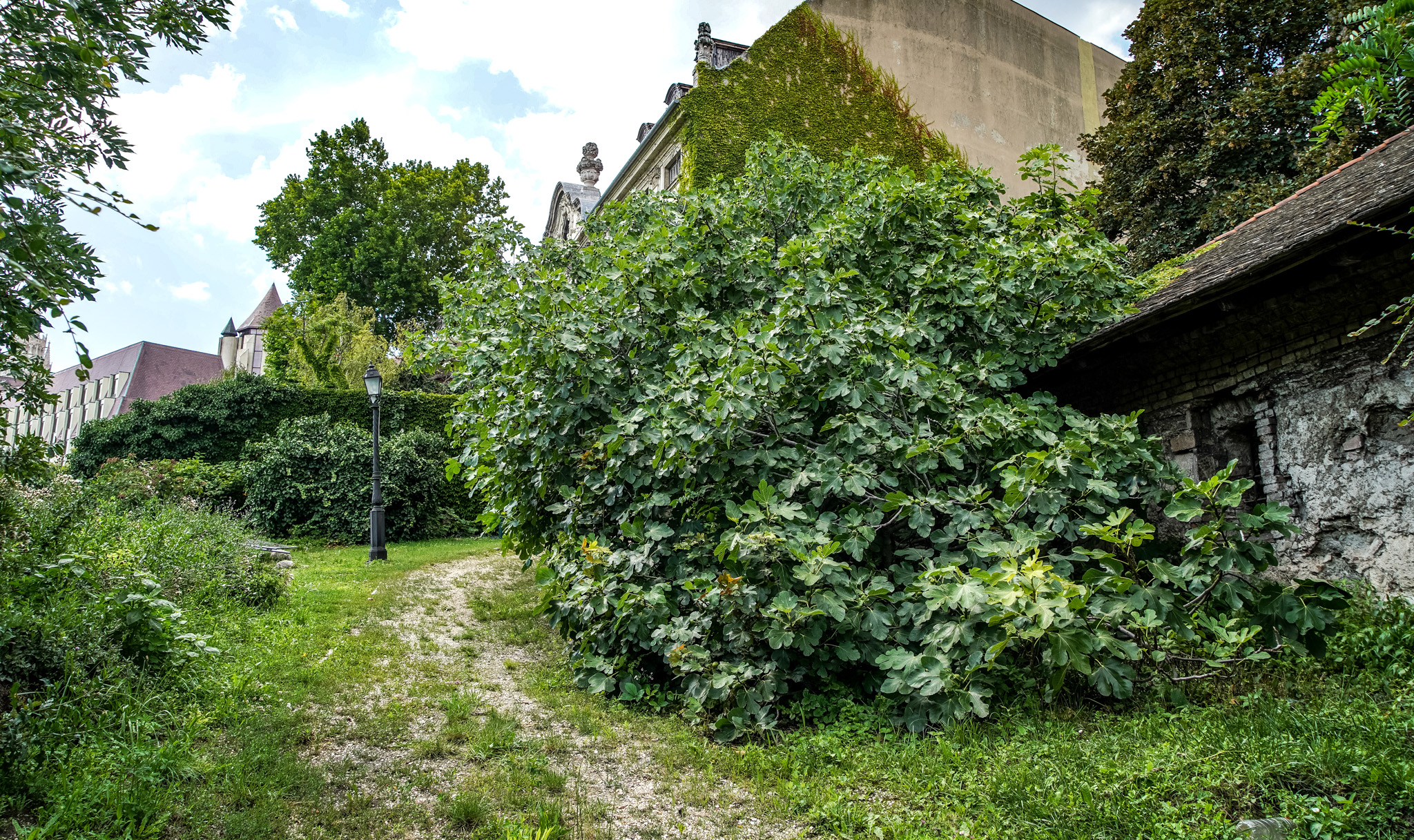
Fig trees at the outdoor location at 9 Táncsics Street (Photo: Balázs Both/pestbuda.hu)
In addition to the archaeological exhibition, the T9 outdoor site, with an unparalleled view, hosts literary and historical evenings, music shows, dance performances, unusual guided tours and museum pedagogical sessions throughout the summer, organized by Várkapitányság.
Recent archaeological excavations have enriched our knowledge of the area’s twisted history with irreplaceable finds and treasures, contributing to making T9 an exciting community and cultural space where visitors can not only be an observer but also participate in history for a while.
Cover photo: The T9 archaeological exhibition at 9 Táncsics Mihály utca, awaits visitors (Photo: Várkapitányság / Kárász Karolina)

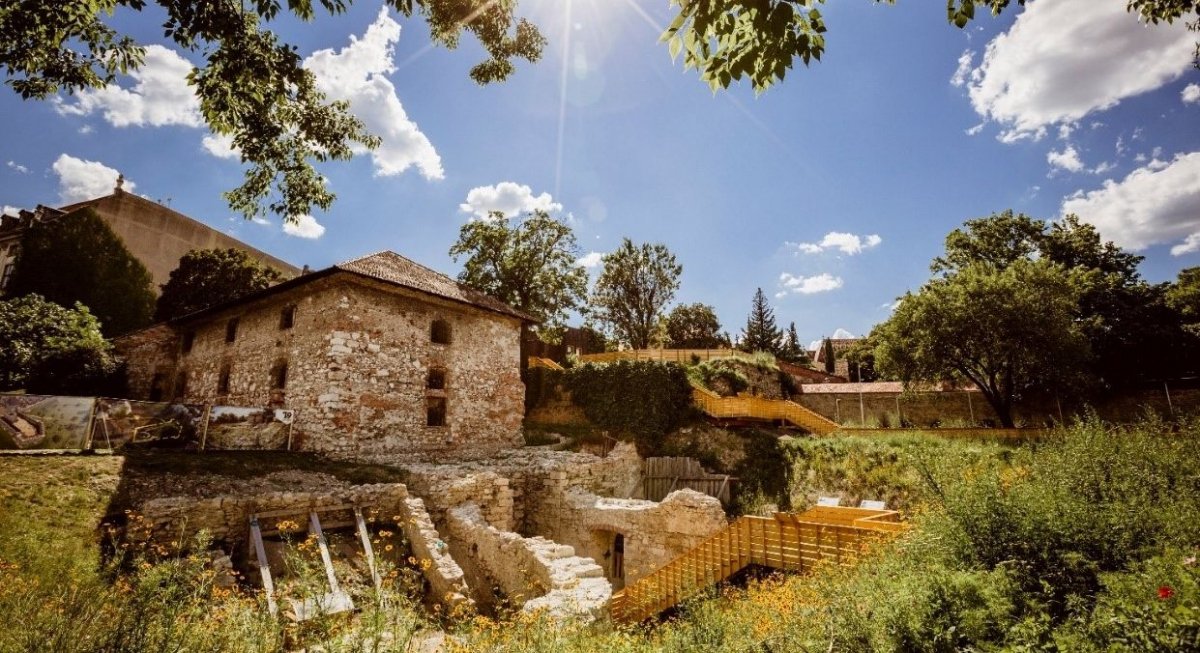


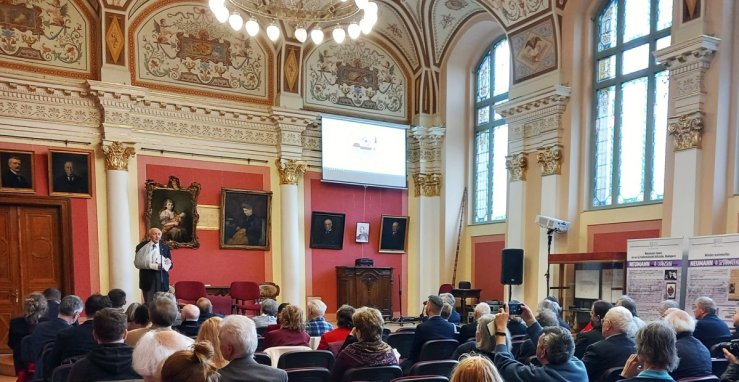
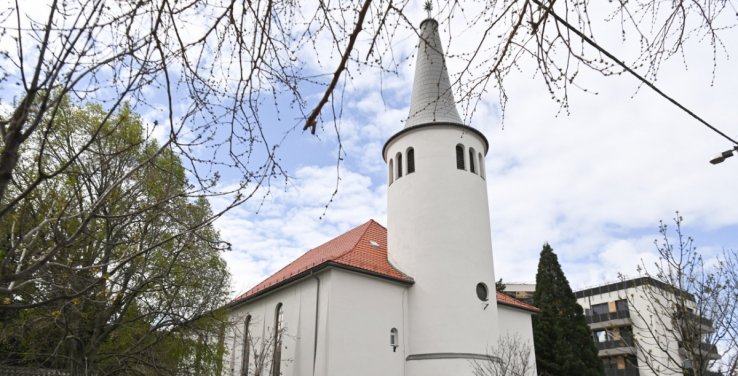


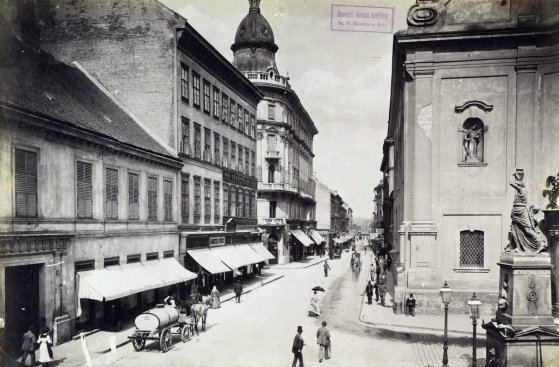






























Hozzászólások
Log in or register to comment!
Login Registration